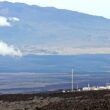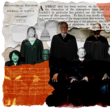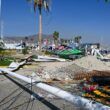We should really worry about nuclear winter
By Alan Robock, August 14, 2008
The greatest danger that humans pose to Earth isn’t geoengineering, ozone depletion, or even global warming. Rather, it’s the climatic consequences of nuclear war. As recent work by Brian Toon, Gera Stenchikov, Luke Oman, Rich Turco, Chuck Bardeen, and myself has shown, we now understand that the atmospheric effects of a nuclear war would last for at least a decade–more than proving the nuclear winter theory of the 1980s correct. By our calculations, a regional nuclear war between India and Pakistan using less than 0.3 percent of the current global arsenal would produce climate change unprecedented in recorded human history and global ozone depletion equal in size to the current hole in the ozone, only spread out globally. We need to solve this problem so that we have the luxury of worrying about global warming and the consequences of geoengineering.
Still, geoengineering research needs to be federally funded at a robust level in addition to funding for research on nuclear winter and for mitigating global warming. It needs to investigate the efficacy, costs, and positive and negative effects of all proposed geoengineering schemes and should be based on an agreed set of scenarios for all researchers to use–as was done with the Intergovernmental Panel on Climate Change–so that results can be compared.
These scenarios need to include business-as-usual or mitigation scenarios for greenhouse gas and tropospheric aerosol emissions, combined with gradual and instantaneous aerosol injections into the stratosphere. We’ll only be able to decide which scenarios are “realistic” after far more research on whether it’s even possible to execute them, and what the climate responses will be. In the meantime, without a large injection of research support, we’ll have to learn from ongoing efforts, which will produce results slowly.
As I reported in my recent Science article, an Energy Department white paper entitled “Response Options to Limit Rapid or Severe Climate Change”–prepared for President George W. Bush’s National Climate Change Technology Initiative in October 2001–recommended $13 million per year be directed toward a national geoengineering research effort, but the paper was never released. I suspect that’s because it would’ve been tantamount to the Bush administration admitting that global warming is a real problem.
As I wrote in Science, “It is not too late to make up for lost time, but we must avoid further delay. A research program, more generously funded than the one proposed in 2001, supported by the federal government with international cooperation, will allow us to compare the efficacy, costs, and consequences of the various options of responding to global warming, mitigation, sequestration, geoengineering, or doing nothing, so that an informed public can agree on the best courses of action.”
Topics: Climate Change
Share: [addthis tool="addthis_inline_share_toolbox"]














